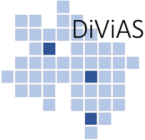Case study 1 - Movement in Space and Time
Case study 1 - Movement in Space and Time
This case study presents two interconnected analyses that enable the georeferenced differentiation of global movements related to shipping routes and goods, as well as colonial collection activities, through collaborative global research. The material basis includes preserved ship logbooks, journals from prize court records, and goods lists (Prize Papers Analysis 1: Shipping Routes), along with the preserved documents of two collectors of ethnological objects from the 19th century, Baudissin and Deeken. These documents comprise diary entries and reports from the Admiralty or other administrative contexts concerning their travels (Analysis 2: Provenance). By employing data science, the existing documents for Analysis 1 are initially processed automatically to facilitate annotation, searching, and historical contextualisation. The digital historical data will be analysed, classified, and catalogued automatically based on specific parameters and entities, such as the recognition of places, times, and persons or objects.

Analysis 1 – Shipping Routes
For the analysis, there are digitised logbooks, journals, examinations, and goods lists with detailed space-time information provided by the Prize Papers Project. Additional handwritten logbooks will be transcribed using "Transkribus" to be included in the analysis. The goal is to georeference the extensive source material, focusing on data about places, times, objects, and people to be able to trace global shipping routes and their cargoes. With the help of AI methods, the documents will be automatically processed.

Analysis 2 – Provenance and Collector Biographies
Two collections from the South Seas, housed at the State Museum Nature and Human (Landesmuseum Natur und Mensch) in Oldenburg, will be used for the analysis of provenance and collector biographies. The collectors' holdings will be digitised at the beginning of the project to enable further research using data science techniques. The goal of the analysis is to georeference the extensive source material to be able to trace the travels of the collectors and their objects. This will be facilitated by the automated reading of documents.

Data Science
With the use of data science and Natural Language Processing, the existing documents are first automatically processed so that they can be annotated, searched and placed in a historical context. The digital, historical data will be automatically analysed, classified and catalogued on the basis of certain parameters, e.g. recognition of places, times, people and objects. In particular, such a Named Entity Recognition is to be designed and evaluated for the extraction of information from historical documents.
